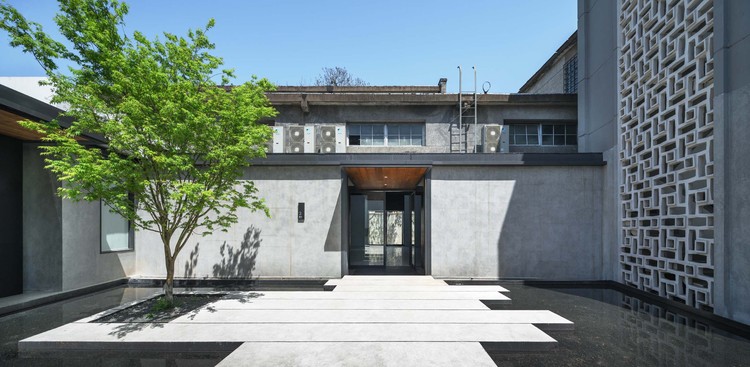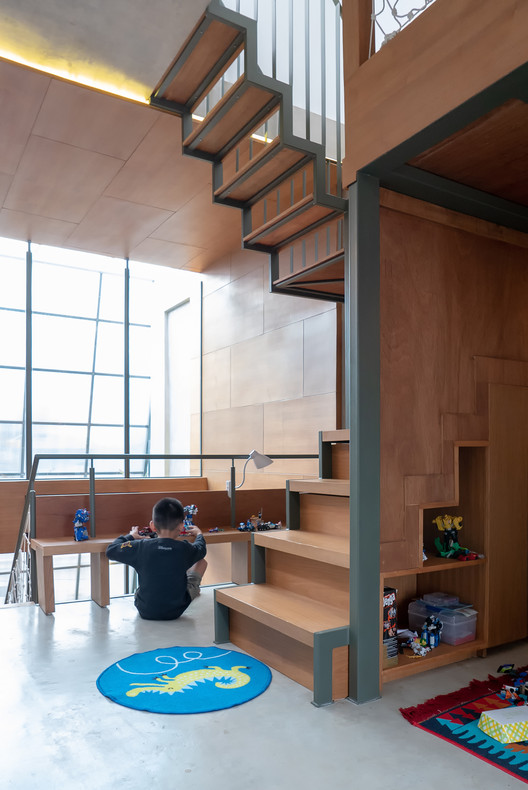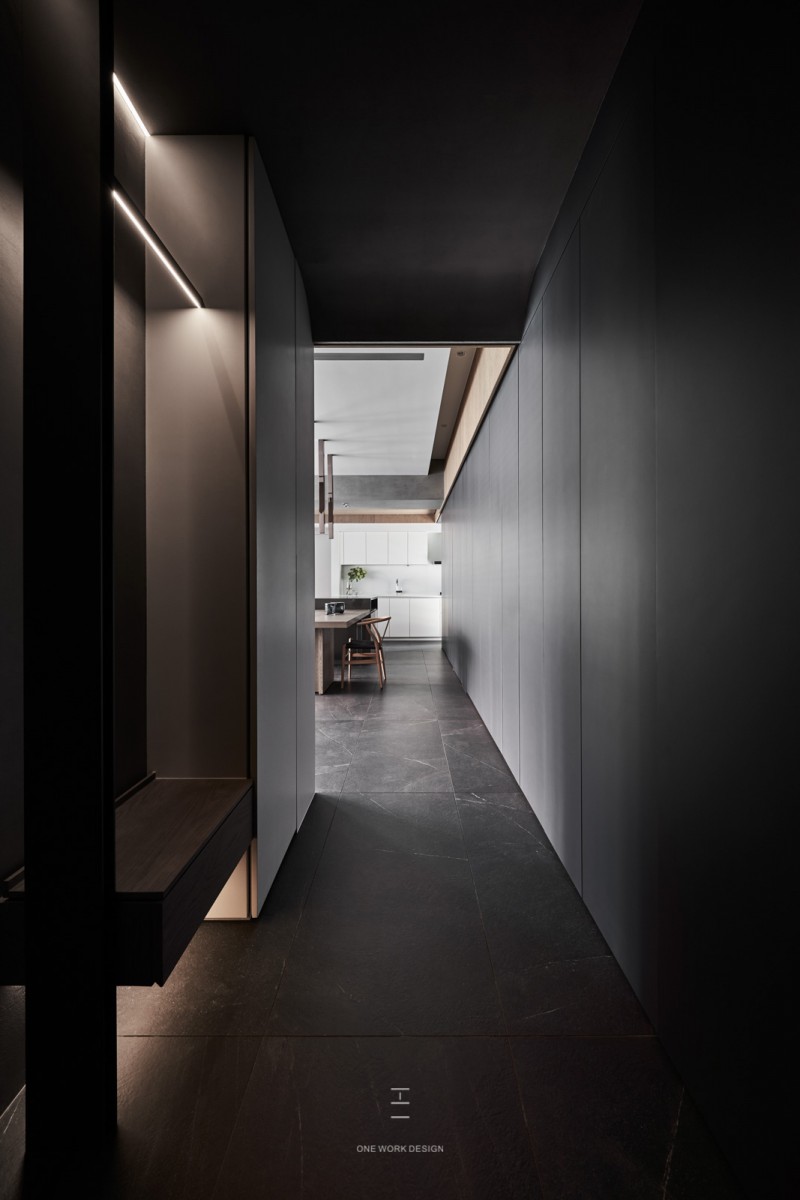Cedar House Omar Gandhi Architect
2011-09-02 00:00
架构师提供的文本描述。LyndaEarle博士和她的丈夫AndyBlackadar博士都在新斯科舍的小城镇长大(尽管Lynda出生在温尼伯)。两人都去哈利法克斯达尔豪西大学学习医学。他们在上学的时候相遇,最后结婚了。在离开安大略省完成家庭医学的住院后,他们最终想回到他们来自的地方,开始他们自己的实践,并有一个家庭在一起。
Text description provided by the architects. Dr. Lynda Earle and her husband Dr. Andy Blackadar both grew up in small towns in Nova Scotia (though Lynda was born in Winnipeg). Both went to study medicine at Halifax’ Dalhousie University. They met during their time in school and eventually got married. After leaving to Ontario to complete their residencies in Family Medicine, they wanted to eventually go back to the place that they came from, start their own practices and have a family together.
© Greg Richardson Photography
现在是考虑搬家或扩建家园的时候了。出于许多原因,他们决定留在原来的地方,扩建现有的房子。增加和翻新项目是一次会议设计的。派对很简单:向南打开“私人”一侧的房子。这个方向将梅西河的景色纳入框架,允许冬季尽可能多的阳光照射,夏季允许遮荫。最重要的是,该项目希望保持适度的街道存在(保留原来的房子),同时他们将使用当地的材料和传统的建筑技术。
The time came to consider either moving or expanding their home. For many reasons they decided to stay where they were and expand the existing house. The addition and renovation project was designed in one sitting. The parti was simple: open the house on the “private” side towards the south. This orientation brought views of the Mersey River into frame allowing as much sunlight in as possible during the winter months and shade in the summer months. Above all else, the project aspired to maintain a modest street presence (preserving the original house), while in the addition they would use local materials and traditional building technologies.
© Greg Richardson Photography
厄尔·布莱克达尔一家人的家坐落在一条密集的主要城市街道的中间,坐落在一片狭长的土地上,背对着默西河。以前,这个家没有与河流打交道。房子的后方有南方的曝光,这一属性几乎没有被挖掘出来。主要是,拟议增加的部分既符合隐私要求,也符合谦逊的特点。
The Earle Blackadar family home sits in the middle of a dense main urban street on a deep narrow lot and backs onto the Mersey River. Previously the home lacked engagement with the river. The rear of the home has southern exposure, an attribute which had hardly been tapped. Primarily, the massing of the proposed addition responds to both a requirement for privacy and a character of modesty.
© Greg Richardson Photography
第二,这种聚集反应了一种愿望,即吸收和遮挡自然阳光,取决于一年中的不同时间。第二层的悬臂穿过一楼,随后遮住了客厅。第二层的窗户被深深地固定在卧室里,以提供必要的遮阳。从街道/人行道上看,所有建议的窗口都是不可见的。所有这些都是东方和西方建筑高地精心放置雪松,以3种形式。现有的百年老房子仍然一如既往,新夹克4“暴露雪松瓦。
Secondly, the massing responds to a desire to both draw in and shade natural sunlight depending on the time of year. The second story cantilevers over past the ground floor and subsequently shades the living room. The second story windows are deep set into bedrooms to provide necessary shading. From street/sidewalk view none of the proposed windows are visible. All that is visible are both east and west building elevations of meticulously placed cedar, in 3 forms. The existing century old house remains as it has always been, with a new jacket of 4″ exposure cedar shingles.
© Greg Richardson Photography
我们为这个项目提出了简单有效的可持续设计策略。首先,客户决定改变他们现有的房子。没有建造新的愿望。计划使现有的房子更有效率,并将有效的策略应用于新的部分房屋如下:将供暖系统从传统的油改为热泵。加一个空气交换器。所有新墙将建造新斯科舍建筑规范要求R24和屋顶R40。新的地基墙将使用ICF建造。屋顶和悬臂洞将充满封闭的电池喷雾绝缘.房子里的几个旧窗户将被更换,所有的新窗户(大开口)都将是二层的高效乙烯基窗户和底层的木窗。
We proposed strategies for sustainable design on this project that were simple and effective. First and foremost, the clients decided to alter their existing house. There was no desire to build new. The plan to make the existing house more efficient and to apply efficient strategies to the new portion of the house is as follows: Change the heating system to a heat pump from tradition oil. Add an air exchanger. All new walls will be built to Nova Scotia Building Code requirements R24 and the roof to R40. The new foundation walls will be built using ICF. The roof and cantilever cavities will be filled with closed-cell spray insulation. Several of the older windows in the house will be replaced and all of the new windows (large openings) will be highly efficient vinyl windows on the second story and wood windows on the ground floor.
内建橱柜的布局提供了景观走廊。所有的橱柜,在两层楼运行的方向,并向河流的看法。从视觉上看,这一增加本身是从属于现有的房子。新的部分将是更短,更低,更少的纹理。西部和东部的海拔高度都非常小-只是雪松的质地而已。完全玻璃化的南高地属于私人领域。
The layout of built-in cabinetry provides view corridors. All of the cabinetry, on both floors run in the direction of the building and the view toward the river. Visually, the addition presents itself as subservient to the existing house. The new portion would be shorter, lower, and less textured. Both the west and east elevations are extremely minimal – just the texture of the cedar. The fully glazed south elevation is within the private realm.
© Greg Richardson Photography
我们设计的金属屋面的附加,以便有一个低倾斜屋顶,以减少与现有屋顶框架的整体接触。从一开始就对物质的完整性有严格的要求。雪松还没完成。内部磨坊是自然的。混凝土是自然的。屋顶将是自然的,只是镀锌。重要的是要认识到所使用的材料是普通的,尽管材料和想法的总和试图取得更多的成果。
We designed for metal roofing on the addition in order to have a low sloped roof to decrease the overall engagement with the existing roof framing. There was a rigor about material integrity from the outset. Cedar is left unfinished. Interior millwork is left natural. Concrete is left natural. The roofing will be left natural, just galvanized. It was important that one recognized that the materials used were ordinary, though the sum of the materials and ideas attempt to achieve much more.
 举报
举报
别默默的看了,快登录帮我评论一下吧!:)
注册
登录
更多评论
相关文章
-

描边风设计中,最容易犯的8种问题分析
2018年走过了四分之一,LOGO设计趋势也清晰了LOGO设计
-

描边风设计中,最容易犯的8种问题分析
2018年走过了四分之一,LOGO设计趋势也清晰了LOGO设计
-

描边风设计中,最容易犯的8种问题分析
2018年走过了四分之一,LOGO设计趋势也清晰了LOGO设计


























































































